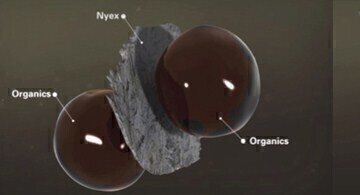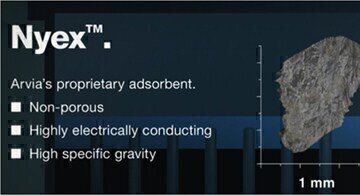Water/Wastewater
Reduce recalcitrant Chemical Oxygen Demand (COD) and remove problem pollutants in wastewater
Oct 29 2015
The Arvia Organics Destruction Cell (ODC) is a water and wastewater treatment system designed to reduce recalcitrant Chemical Oxygen Demand (COD) and remove problem pollutants as well as colour. It is a modular system that can be scaled to achieve required flow rate.
Arvia’s patented advanced oxidation technology combines the advantages of adsorption and oxidation within a single unit reducing footprint and CAPEX.
Adsorption is a well known and effective treatment technology for removing COD and problem pollutants in water and wastewater. Granular Activated Carbon (GAC) is the most widely used adsorbent, but once used requires either disposal or off-site regeneration.
At the heart of the Arvia ODC technology is Nyex™ – it’s proprietary adsorbent. Nyex™ is not only able to adsorb organic problem pollutants from water efficiently, it is also able to rapidly and continuously regenerate in-situ to enable the adsorbent to be used again and again. Adsorption is rapid due to the non-porous nature of Nyex, resulting in a low residence time.
UV/TiO2, O3, RO and Advanced Oxidation Processes treat the whole volume of water resulting in high energy costs for low levels of organics removal. In contrast, Arvia's ODC uses energy in proportion to the waste streams organic load resulting in lower OPEX.
The Arvia ODC further differentiates itself by not requiring any chemicals, not producing any by-products and not generating any wastewater or sludge.
How does the Arvia ODC work?
The water and wastewater flows through a bed of Nyex™. Contaminant organics are adsorbed onto the Nyex surface. A low voltage electric current proportional to the organic concentration is passed through the Nyex causing the adsorbed organics to be oxidised.
Nyex is highly conductive so its surface is regenerated for further adsorption and the process can continue without interruption or replacement. Treated water flows from the bottom of the cell where it can either be used or re-used in-process or the treated wastewater can be discharged to the environment
Events
May 05 2024 Seville, Spain
May 13 2024 Munich, Germany
May 23 2024 Beijing, China
May 23 2024 Beijing, China
Jun 10 2024 Algiers, Algeria














